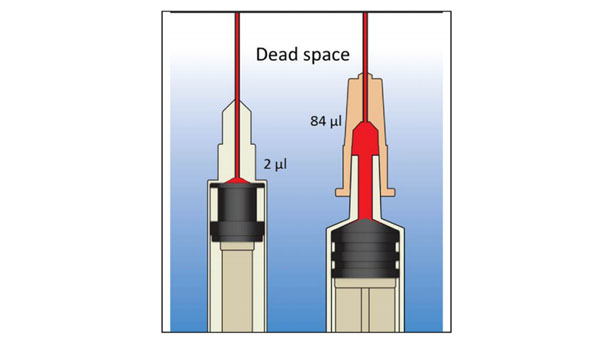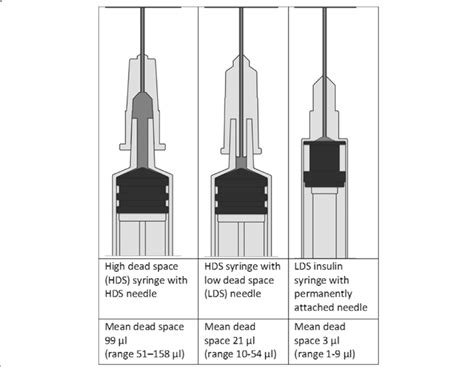One of the most mundane but important aspects of giving a vaccine is getting the right amount of vaccine out of a vial and into a patient. This requires drawing up the vaccine into a syringe and then injecting the appropriate amount of material into the individual. If too little vaccine is injected from the syringe, the individual may not develop an immune response, and the vaccine will be ineffective.

In most syringes there is what’s called “dead space” at the top of the syringe that retains some of the vaccine in the needle. This means you must draw up more vaccine than you need to inject to account for the dead space in the syringe. Pfizer actually has packed additional amounts of vaccine in each five-dose vial to ensure there is enough vaccine to account for the dead space. With the Pfizer vaccine, the dead space can equal 1/3 of the total vaccine dose!
There are two ways to reduce dead space. One is to put low dead space needles on normal syringes, which can reduce the necessary volume by 20%. The most efficient, however, is to use syringes designed without dead space. This allows administration of the entire syringe of vaccine to each individual. By doing this, you can actually get six doses of a vaccine from each vial. This can provide a 20% increase in vaccine dosages from the same amount of vaccine supply.

Currently many areas do not use these syringes. However, if every dose of Pfizer vaccine were given this way, we would immediately increase the available vaccine by 20% without any additional manufacturing.
For Pfizer’s total production of 300M doses this year, we would get an additional 60 million doses; enough to immunize 30 million people or the entire state of Texas!
We need to use these special needles and syringes to achieve this advantage, but these are the types of ideas that can make a real difference in our vaccine effort!
I wish I felt like we had more choice in what needles & syringes we could use. Right now we seem to be low on proper supplies. We don’t have enough 1” needles. I am having to “size up” people to see if I can use more of the readily available 1.5 inch needles.
I am sure every vaccine clinic is trying to maximize the number of doses they can get out of each vial. We are also trying to make sure we don’t waste one single dose at the end of the day due to people not showing up.
LikeLiked by 1 person
I am devoted to your blog, have shared with everyone I know! So, first time, I have a question related to:
“There are two ways to reduce dead space. One is to put low dead space needles on normal syringes, which can reduce the necessary volume by 20%. The most efficient, however, is to use syringes designed without dead space.”
Why?. . .Why the waste for such a precious resource? Sorry, but seems like the proverbial no-brainer inquiry. . . is it profit motivation? Or is there a safety issue, as you state, “If too little vaccine is injected from the syringe, the individual may not develop an immune response, and the vaccine will be ineffective.”
How can the health care industry be wasting so much at this critical stage of inoculation? Especially considering the urgency as COVID mutates (thanks for sharing the New Yorker article explaining more on mutations).
jbakerjrblog posted: ” One of the most mundane but important aspects of giving a vaccine is getting the right amount of vaccine out of a vial and into a patient. This requires drawing up the vaccine into a syringe and then injecting the appropriate amount of material into the “
LikeLiked by 1 person
Think everyone would agree. Just not prepared for this option. We need to get manufacturing to catch up. More to this than just making vaccine.
LikeLike
Pfizer says it will reduce the number of vials shipped in the US to account for “extra” doses.
https://www.contagionlive.com/view/pfizer-covid-19-vaccine-vial-overfills-us-quota-doses
LikeLiked by 1 person